Get the Claridge’s look, at home
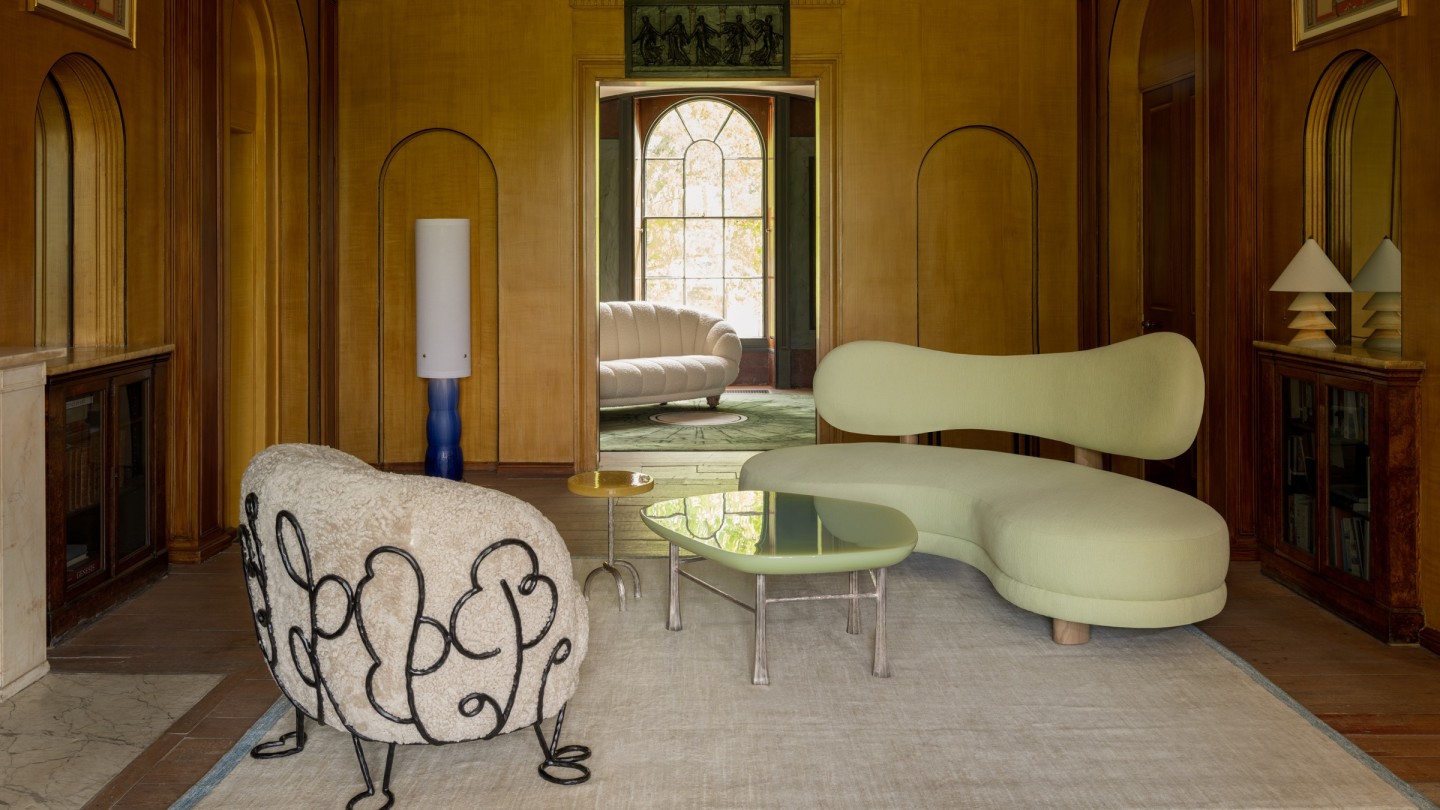
Roula Khalaf, Editor of the FT, selects her favourite stories in this weekly newsletter.
Some of London’s most ardent, ascetic modernists live in the brutalist surrounds of the Barbican, occupying rooms full of monochrome Perriand and Prouvé. Way up near the top of one tower, Bryan O’Sullivan’s home – recently furnished with his debut collection of furniture and lighting – is a breath of fresh air. There are a few straight lines in the mix but nothing black – instead you’ll find a broad curved sofa in lush, soft pink, colourful handblown-glass shapes connected to make overhead pendant lights, and the Cosmo lamp, named after O’Sullivan and husband James O’Neill’s baby son, with a hand-hammered silver base inset with gems (£17,400). It’s a striking scene replete with a full-length Jelly Fish mirror (£44,400, edition of 10) – pure Hollywood by way of Ken Russell – and chairs upholstered in a foliage print by artist and textile designer Claire de Quénetain. Everything here generates a good mood. It’s a happy place. But then you can’t imagine O’Sullivan and O’Neill, who works at Bryan O’Sullivan Studio (BOS for short), creating anything dour. They are as convivial as their designs.
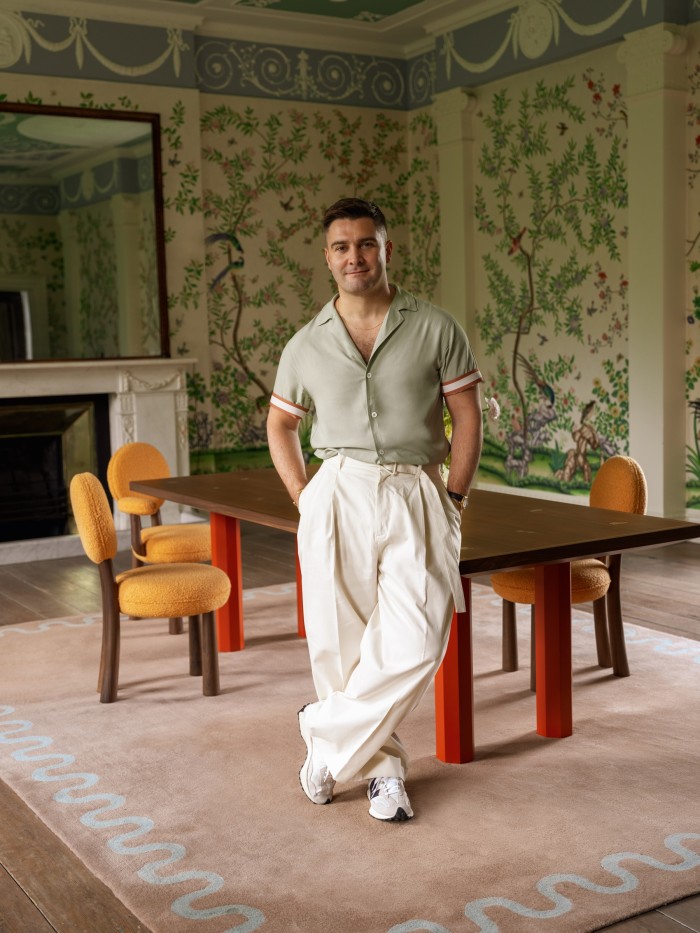
“I’m obsessed with Claire’s illustration, it’s so uplifting,” says O’Sullivan of the de Quénetain fabrics. “We will show the chairs in the retail space we are planning to open this autumn in Mayfair in a plainer, golden-orange mohair velvet. We want to offer a lot of different options. Crucially, what I wanted to do is create furniture that is fit for function, comfortable, but with a sense of humour. It’s supposed to be light. There’s a lot of bouclé and linen and pastel blues, pinks and yellows.”
The pieces are priced to reflect the craftsmanship but eventually the studio hopes to include accessories at a relatively lower price point, with “objects offering a shot of glamour for the home”. These take the form of wooden tissue boxes and scented candles in Murano-glass vessels. “We were talking about how great it would be if we could get one to smell like a baby,” says O’Neill, cradling Cosmo. “Yes,” agrees O’Sullivan, “apparently, they have a distinct pheromone that you can synthesise.”
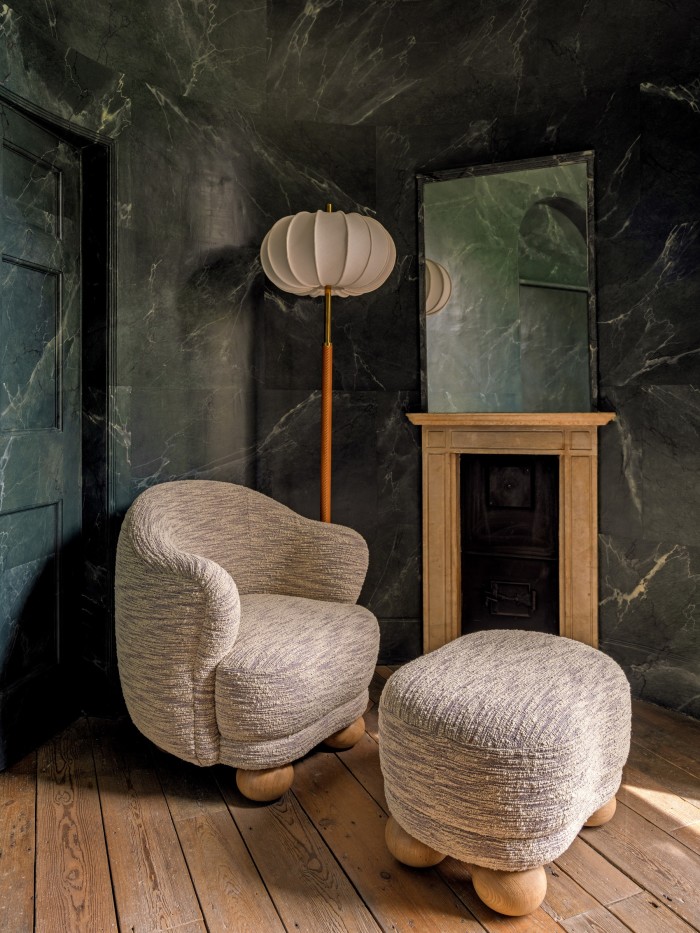
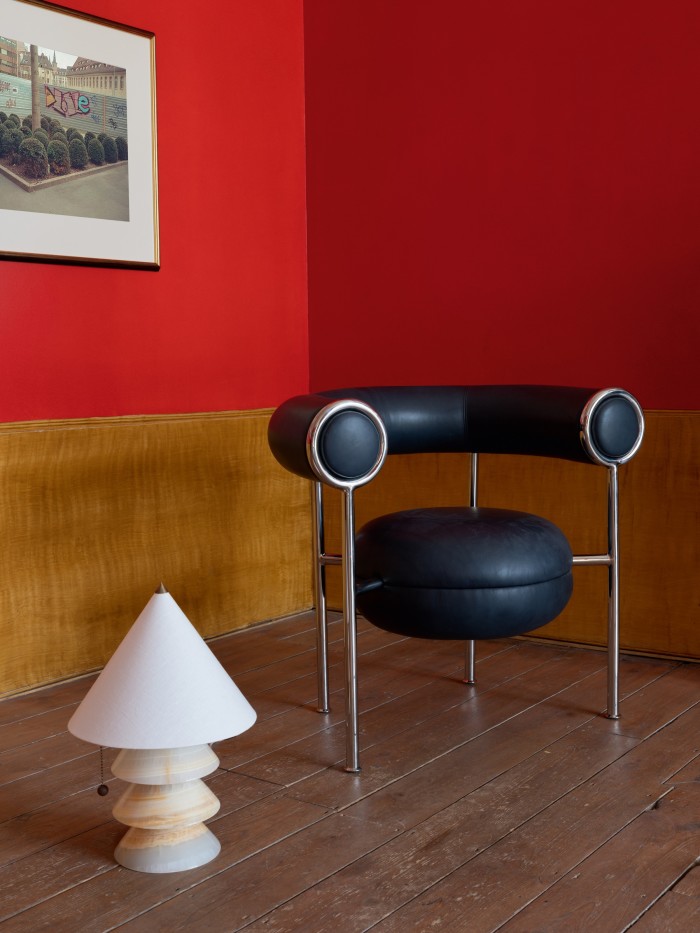
The huge Harvest dining table (£37,200), meanwhile, was handmade by Tim Dunleavy and his brother at Dunleavy Bespoke on their family farm in Kildare. “I worked with Bryan before he established his studio,” says Dunleavy. “It’s amazing to see him grow into a global success. Our work together is always collaborative, and we get to create bespoke pieces that are far beyond the everyday.” The devil, and indeed the wit, is in the detail. The table can be inlaid with personalised brass motifs. “We made one for a client in LA, and they wanted icons of the city,” says O’Neill, “so we had a doughnut, police car, joint, and Kim Kardashian breaking the internet. We are doing a version here with mushroom motifs, made from mother-of-pearl, because, you know… they’re supposed to be magic.”
O’Sullivan interjects: “There are also more sober pieces in the collection. It’s not all Alice in Wonderland.” A particularly handsome example is the Obon modular shelving unit (£42,000), inspired by Franco Albini’s bibliotheques in dark woods and bold lacquered colours. It takes a totem of modernism and gives it new energy.
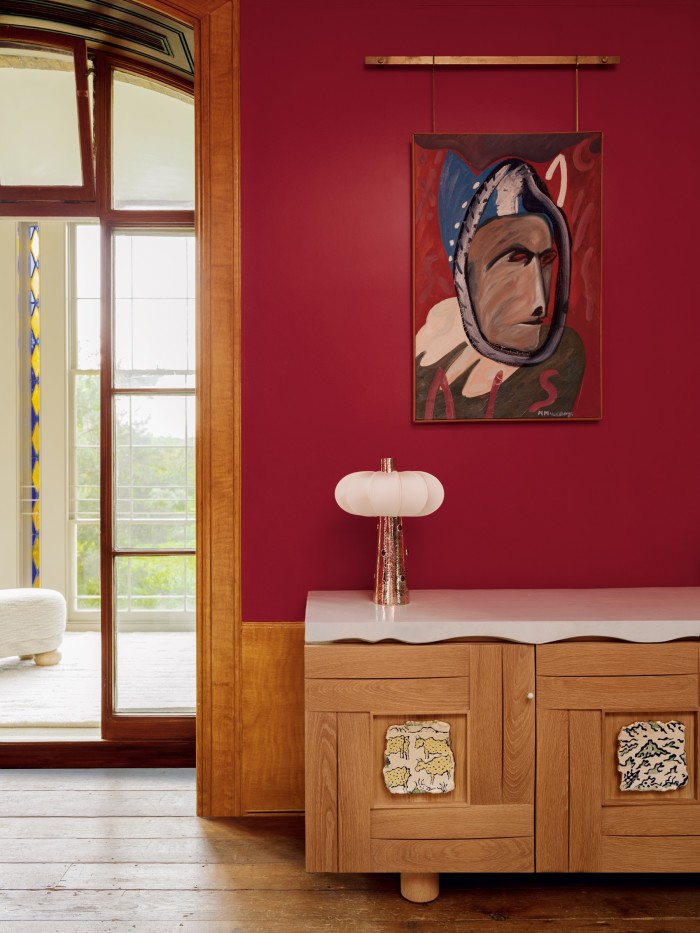
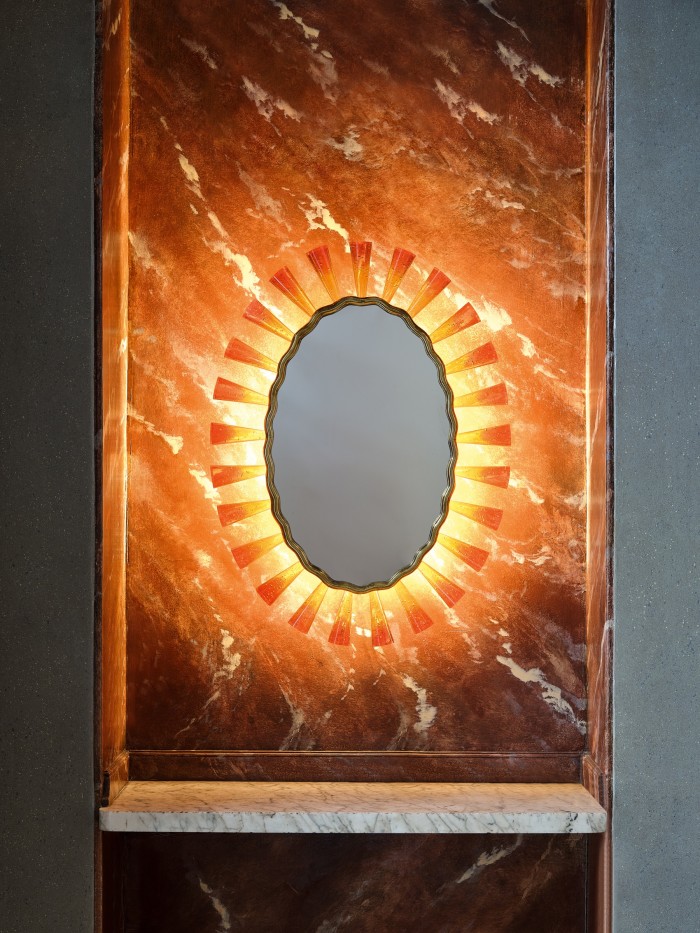
Versions of much of the furniture were going to debut two years ago, but O’Sullivan and O’Neill pulled the plug at a relatively advanced stage. “We had a lot of prototypes ready,” says O’Sullivan. “Then we went shopping in Paris and visited Pierre Augustin Rose and Pierre Yovanovitch, among others. We studied the quality and came back to London and decided to start again.”
Perfection often doesn’t run to a schedule. The 36-piece ensemble will finally launch this summer, but every detail has been considered, including the stately setting for the photography shoot, London’s Pitzhanger Manor – once home to the neoclassical architect Sir John Soane. It is a massive achievement given that O’Sullivan only founded his studio 10 years ago after periods working with Martin Brudnizki, David Collins and Annabelle Selldorf. His ascendancy under his own brand has been extraordinary: if you’ve been to Claridge’s in the past couple of years, you’ve perhaps sat in a scalloped pink chair in one of the suites he designed, or had a cocktail in The Painter’s Room, with its bright deco sheen and stained glass. He is working with the Maybourne Hotel Group, which runs Claridge’s, on new projects. There’s now a satellite studio in New York.
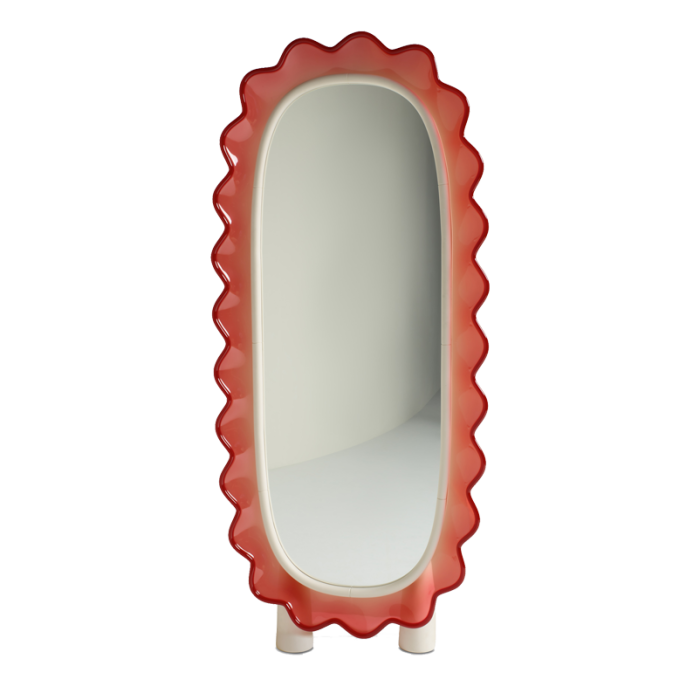
Jellyfish mirror, £44,400 (edition of 10)
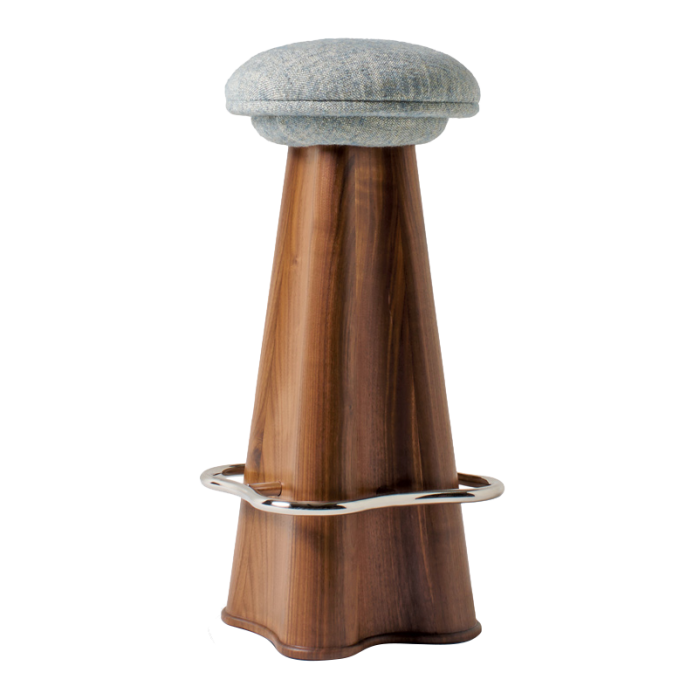
Carlo stool, £9,360
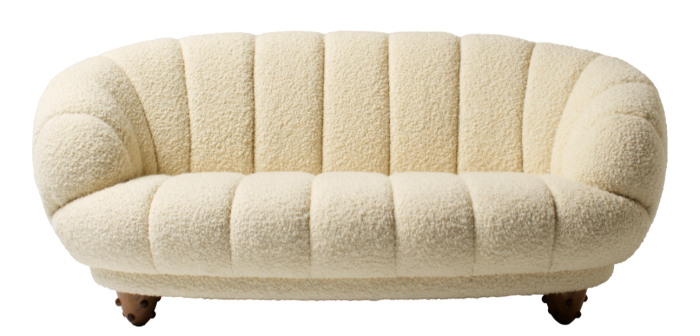
Croissant sofa, £26,400
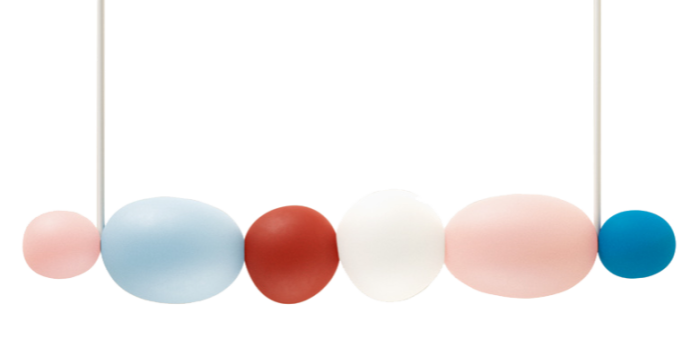
Barbican Pendant, £29,520 (edition of 20)
The O’Sullivan studio is known for luxury feelgood deco, hyped by energising colours, but it’s hard to nail down just what the DNA is. Nothing is cookie-cutter. The Macaroon dining chairs (from £4,560 each) are more classic Bloomsbury than they are Tony Duquette, but O’Sullivan is also partial to psychedelic marble and side tables that look like they are made from citrus-flavoured candy (appositely called Sweetie and priced £7,200).
One of BOS’s residential clients, Andrea Olshan, says it’s the disparate influences that make their rooms so pleasing: “Their work represents elegance without opulence,” she explains. “Bryan and his team are artists and historians. He references shapes from the deco era but makes them modern by producing them in new materials. You marvel at the beauty when you walk into a space he has created, but you’re also supremely comfortable.”
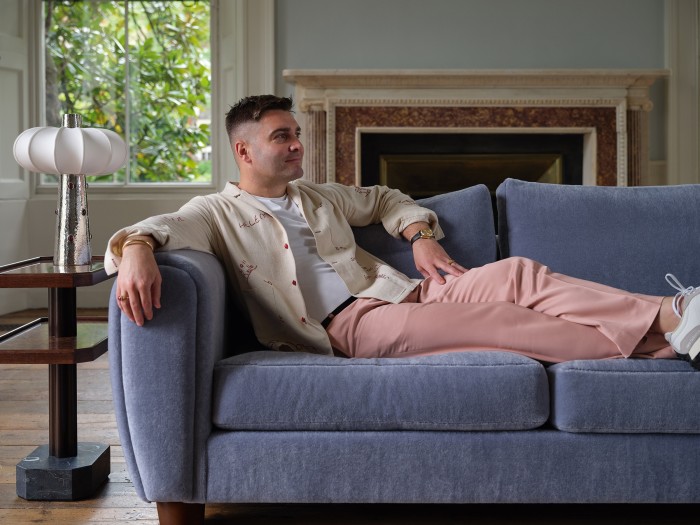
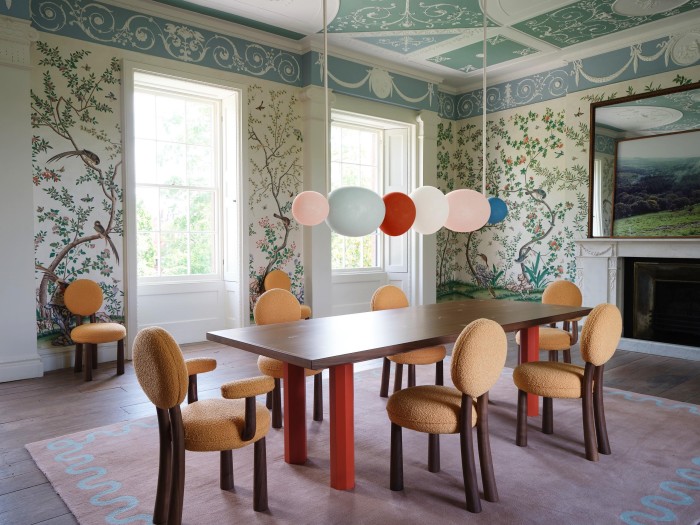
There are certain motifs that the O’Sullivan studio revisits, most notably curvilinear shapes and scalloped silhouettes but, as O’Sullivan says, “we don’t want to pigeonhole ourselves in a world where everything is curvy.” The designer and his team definitely love a story though, and those aforementioned “shrooms” manifest in various forms, including a work-in-progress frosted-glass lamp in the shape of a Disney-like spotted fly agaric mushroom. There’s also giddy fantasy in the Saint wall mirror – a trip of delicious colour (£26,400). It’s gone through several permutations: O’Sullivan and O’Neill are happy to talk through the prototypes, but perfection was eventually achieved.
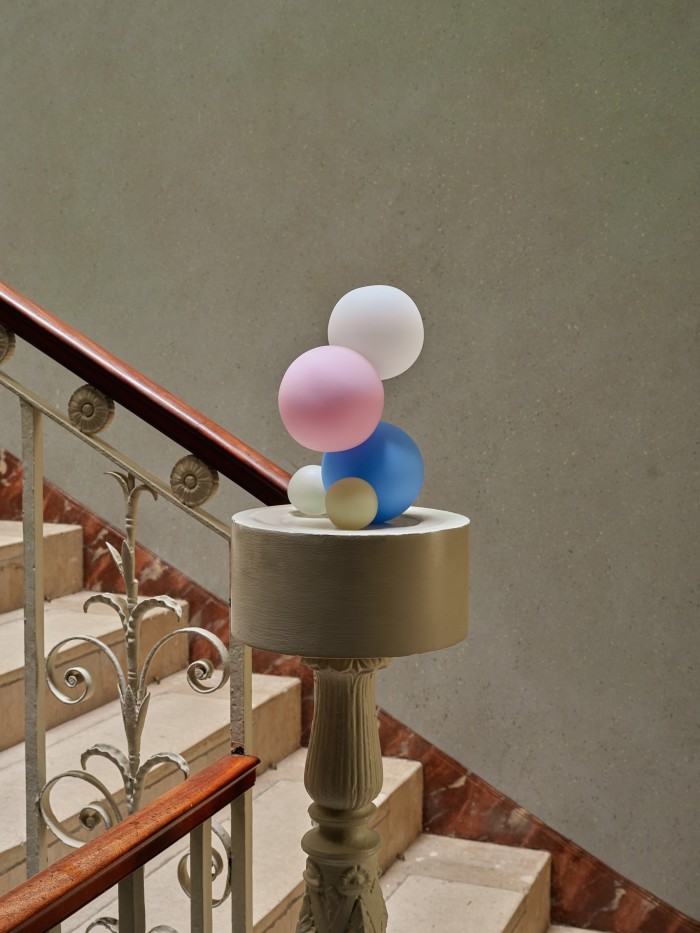
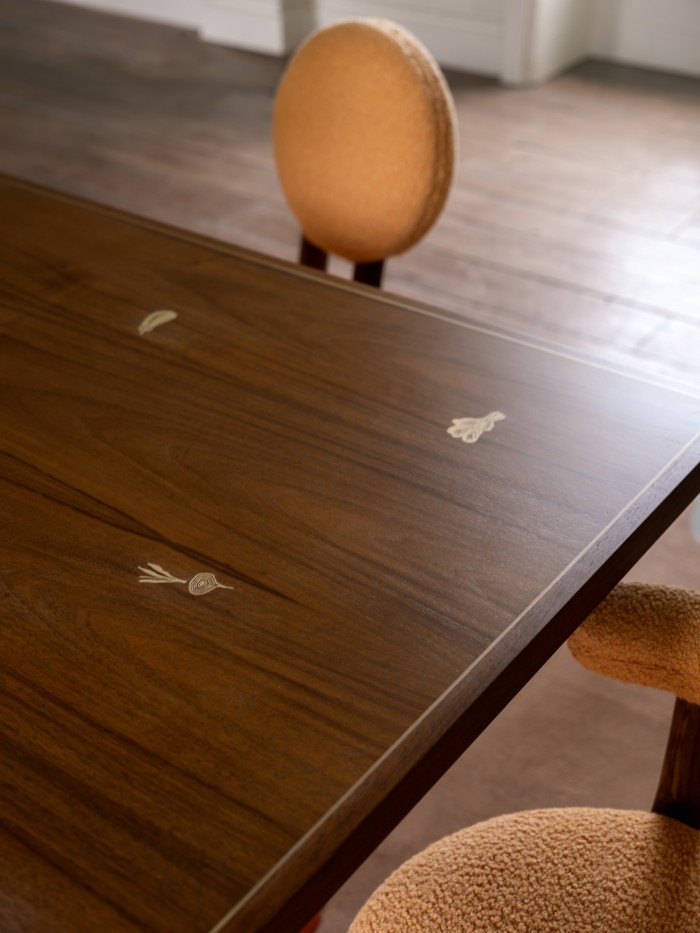
O’Sullivan has taken time to forge relationships with new makers, including some of his favourite artists. By the front door of his Barbican home, there’s a ceramic plate by Cormac Boydell. The artist-ceramicist is based in a remote coastal hamlet in West Cork and takes inspiration from the local landscapes. Some of that imagery has been incorporated into ceramic panels in the new Boydell cabinet (£39,600, edition of 10). Without them, the piece would still have a pleasing graphic energy, but the artwork elevates it. “We talked about materials, colours, textures and the overall composition of the piece,” says Cormac. “The result features one image of a woodland setting, another inspired by my drawings of islands off the coast of Ireland, and another of cattle based on a painting by van Gogh, who in turn based it on Delacroix.”
Working with artists on the collection has brought a sensational dimension to some of the pieces. The Schurmann lamp (£10,800, edition of 20) was provisionally called the “Pomegranate Seed Light”, and its base is an amorphous piece of blown glass in a deep-red molasses colour that makes you want to lick as much as touch it. The O’Sullivan Studio worked on it with glass artist Killian Schurmann, who is based in the foothills of Dublin. “The brief was to transform a decorative pomegranate seed from my collection into something practical,” says Schurmann. “In this case, the base for a light.” The word “flaws” isn’t appropriate, but it’s the slight irregularity in Schurmann’s glass that makes it so special. Ditto the hand-hammering on the Cosmo lamp. In fact, the idiosyncrasies of O’Sullivan’s concepts connect the entire collection. “Bryan has a vision of the result, but working with me, he isn’t constricted by technique, so it can take the piece into a whole new realm,” says Schurmann.
Comments